Jeremy Anderson unveils ceramics inspired by industrial architecture
The co-founder of Apparatus, Jeremy Anderson, reveals his first body of ceramic work, inspired by the black and white photographs of Bernd and Hilla Becher depicting water towers and other industrial structures
Michael Reynolds - Art Direction
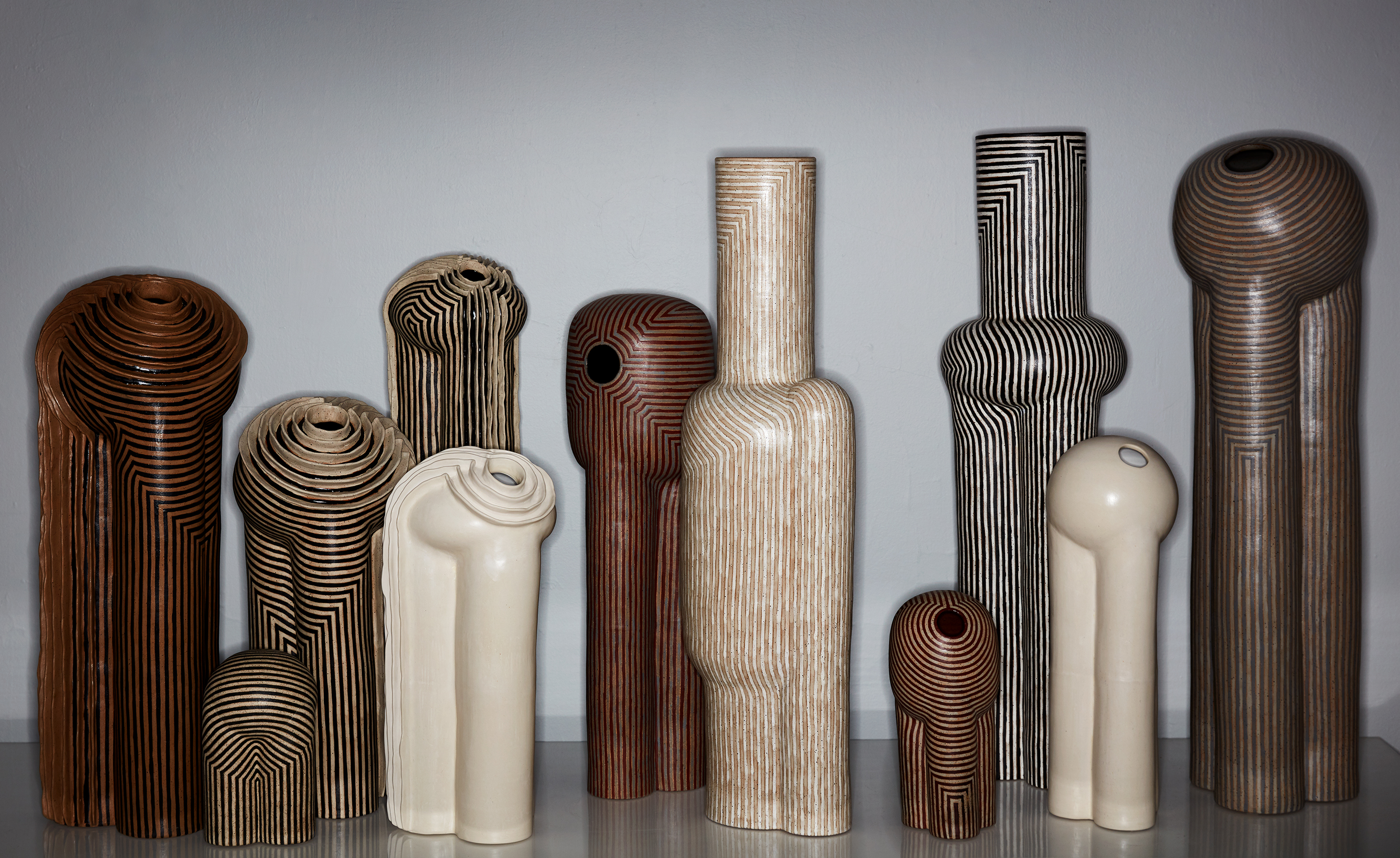
For the past eight years, the lighting and design studio Apparatus has doled out continual helpings of refinement and glamour upon the New York design scene. The studio’s founders, Gabriel Hendifar and Jeremy Anderson – partners in both life and business – are not only responsible for producing an enviably cohesive collection of lighting, furniture and accessories, but have also created three transportive showroom spaces in New York, Milan and Los Angeles to house them all. Throw in a limited edition capsule collection of highly crafted pieces, and collaborations with the likes of Pierre Frey and ceramicist Alice Goldsmith, and it seems that the studio’s reach knows no bounds.
This week, Anderson pushes his own limits with the debut of his first body of ceramic work. For him, this marks a return to working creatively since he has until now, been mostly occupied with the operational and administrative needs of Apparatus' studio (the label's creative output is very much guided by the vision of its creative director Hendifar). The highly personal body of work has been ongoing since 2016 and was largely inspired by the black and white photographs of Bernd and Hilla Becher depicting water towers and other industrial structures. Anderson was struck by how each structure appeared like a different character embedded into the landscape, and began configuring individualised, anthropomorphic forms of his own.
‘I mainly work at the wheel, so I mostly did functional pottery, like bowls and cups,’ he recalls, of how he embarked on this chapter. ‘Whenever I needed a creative outlet from Apparatus, I would go to a community pottery studio here [in Manhattan], and throw, because that’s what I’ve been doing since high school on and off.’
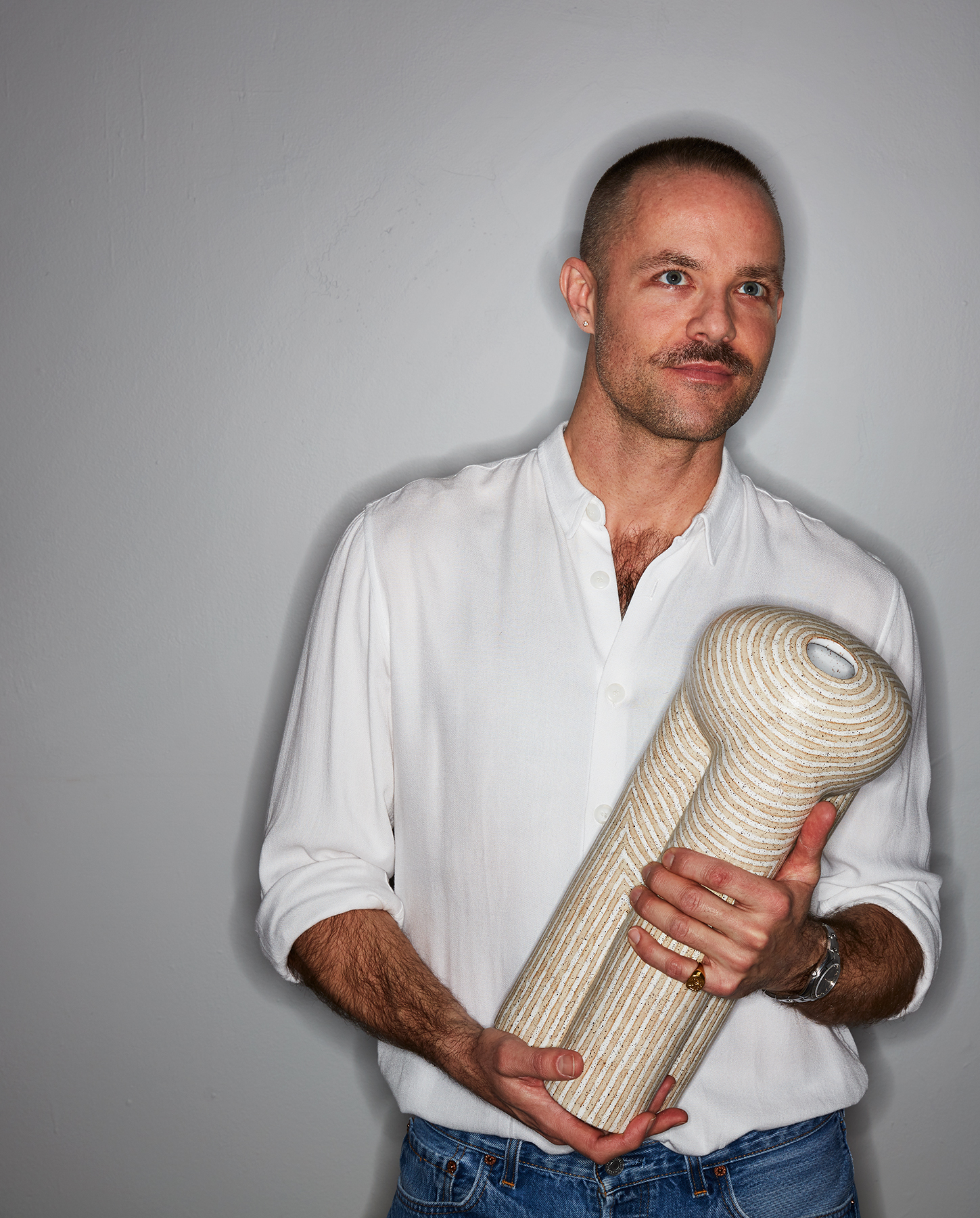
Jeremy Anderson with Piccolo 32, made of stoneware with sand and white hand-painted stripes
‘After I made our full dinnerware set [for our house upstate], I wanted to do something more. I made 12 dinner plates, 18 smaller plates, coffee cups, bowls, larger bowls, I made little gravy boats,’ he laughs. ‘There’s such satisfaction from how immediate you can turn something from a ball of clay into a functional thing. I wanted to do vessels and so I started exploring stacking and creating these shapes.’
Some of the vessels Anderson has named ‘piccolos’ in ode to a former boyfriend of his, who passed away and used to use this term of endearment on him. Each of these take on a character, depending on their size and form. Stouter, smaller pieces, with three legs and a wide body are juxtaposed by tall, statuesque specimens that boast slender raised ridges, which enhance the stripe patterns painted onto the surface. These lines, which Anderson paints alternatingly by hand, are rarely premeditated and they progress intuitively around the ceramic form and ultimately find a resolution. Boldly applied, yet still betraying the intimate and occasional waver of the artist’s hand in a wabi-sabi gesture, the happenstance quality of the patterns ensures that no two pieces are ever truly alike.
Although evocative, Anderson asserts that each piece is rooted in a functional nature. He says, ‘I love the idea of respecting the tradition of ceramics and the piece actually being a vessel that can hold water and can be used, but I didn’t want the hole to be on top. I wanted to place it off-centre and then when I started looking at it, that’s when it started taking on this human characteristic.’
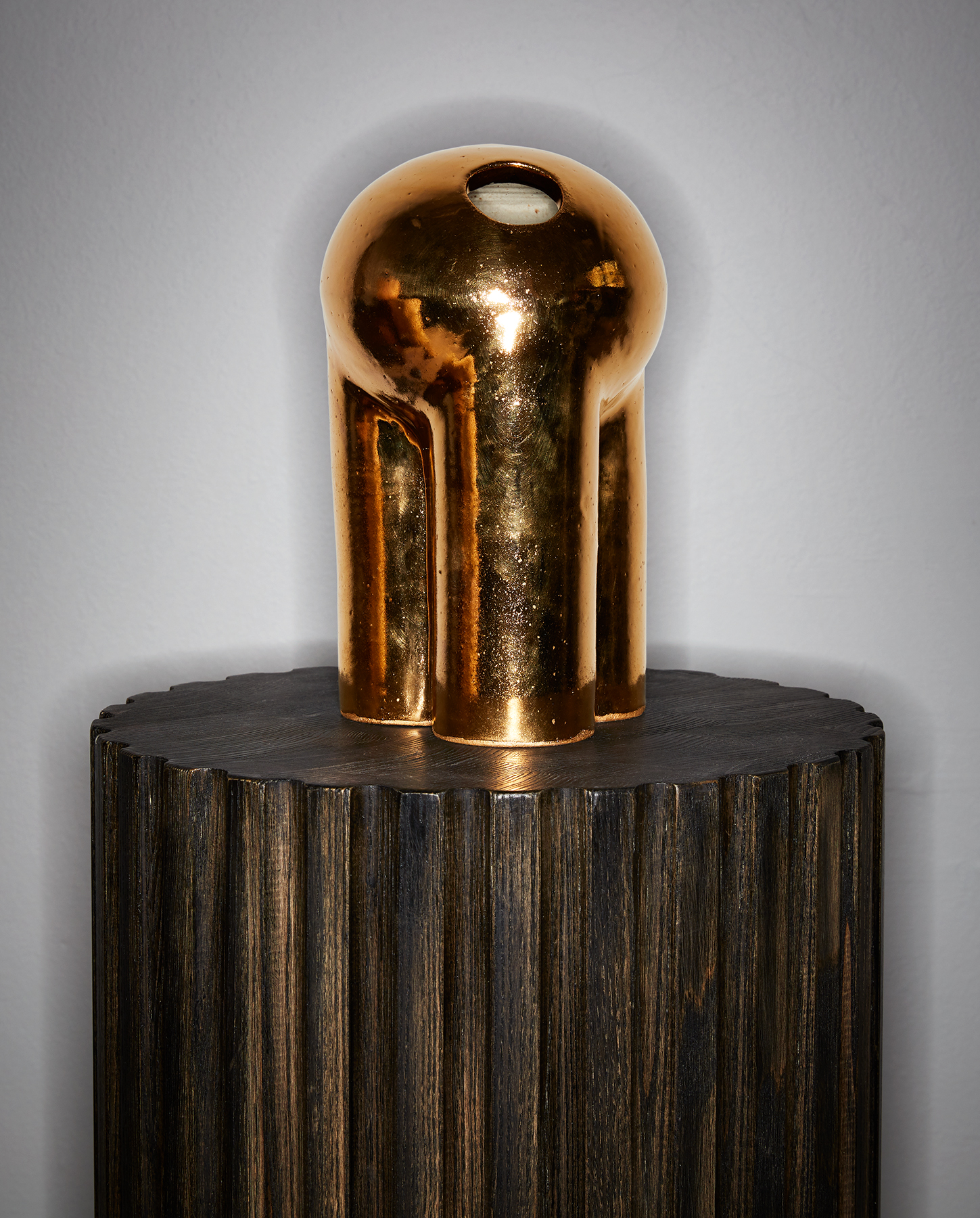
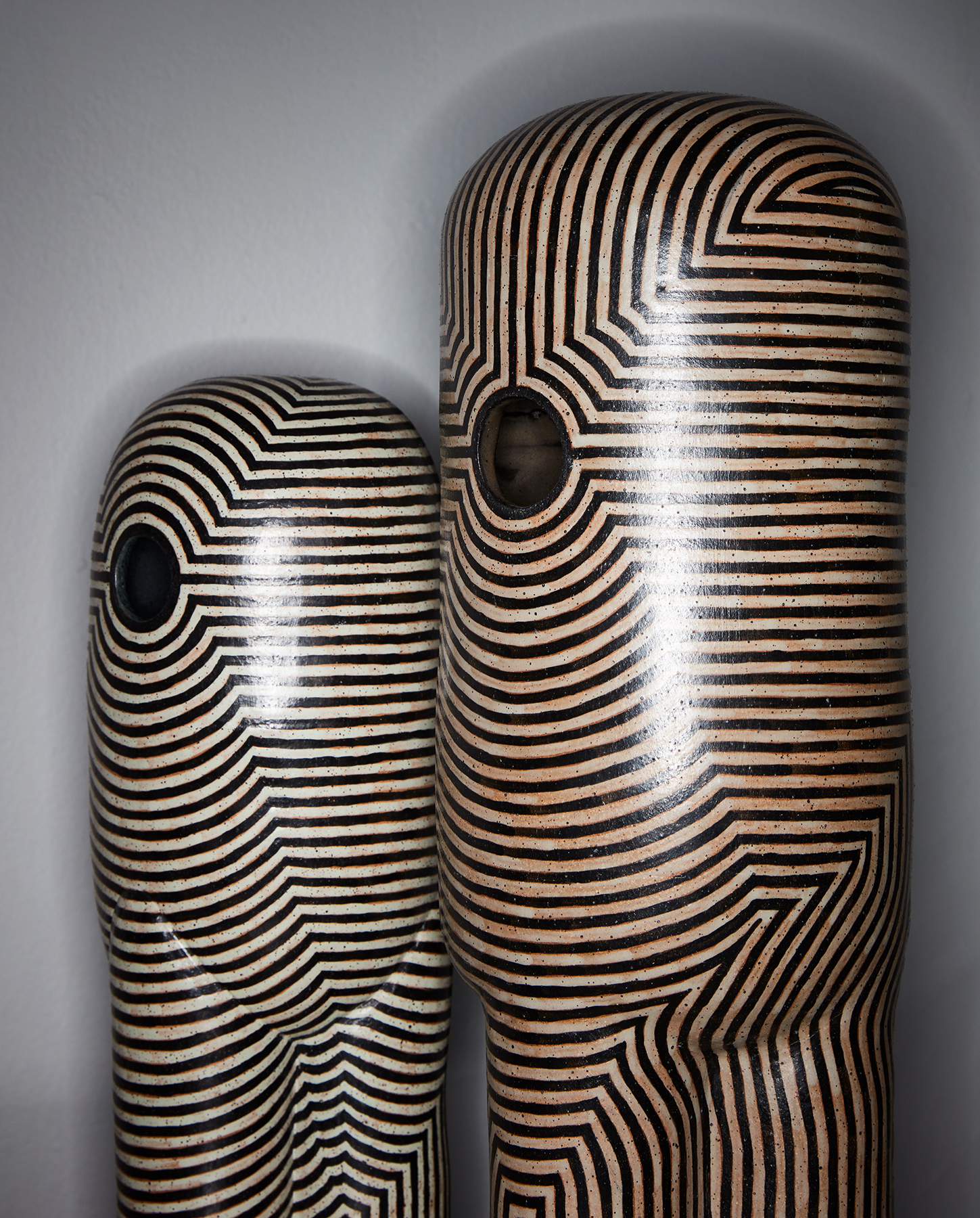
Above, Piccolo 33, titled ‘The Golden Boy’ in stoneware, 22 karat gold lustre. Below, Piccolo 14, made of stoneware with black and mint hand-painted stripes and Piccolo 19, made of stoneware with black and stone hand-painted stripes
While many of the pieces are made out of stoneware, which has been left unglazed to allow the natural tones and grog of the clay to shine through, Anderson has also ventured into making vessels out of raw porcelain, as well as coating other pieces entirely in a brilliant 22-karat gold lustre. Viewed alongside pieces that display the painted line work, which is occasionally reminiscent of wood grain and millwork, one can’t help but make connections between Anderson's artful ceramics and Hendifar's refined design work for Apparatus.
Receive our daily digest of inspiration, escapism and design stories from around the world direct to your inbox.
I love the idea of respecting the tradition of ceramics and the piece actually being a vessel that can hold water and can be used
The exhibition, ‘The Piccolo Parade’, is being staged in Apparatus’ otherworldly New York showroom space. Featuring 30 different pieces of different scales, these are installed in a horseshoe-like configuration, inviting each visitor in to experience them intimately, much like Anderson does when he works on them in his studio in Rhinebeck, New York.
He muses, ‘Personally, from what I see going on in ceramics where it’s a lot of more on more on more, there’s something really nice about just thinking about symmetry and form with a level of control in the decoration that doesn’t feel contrived, or overthought or overworked. I still wanted there to be an element of play with it all.’
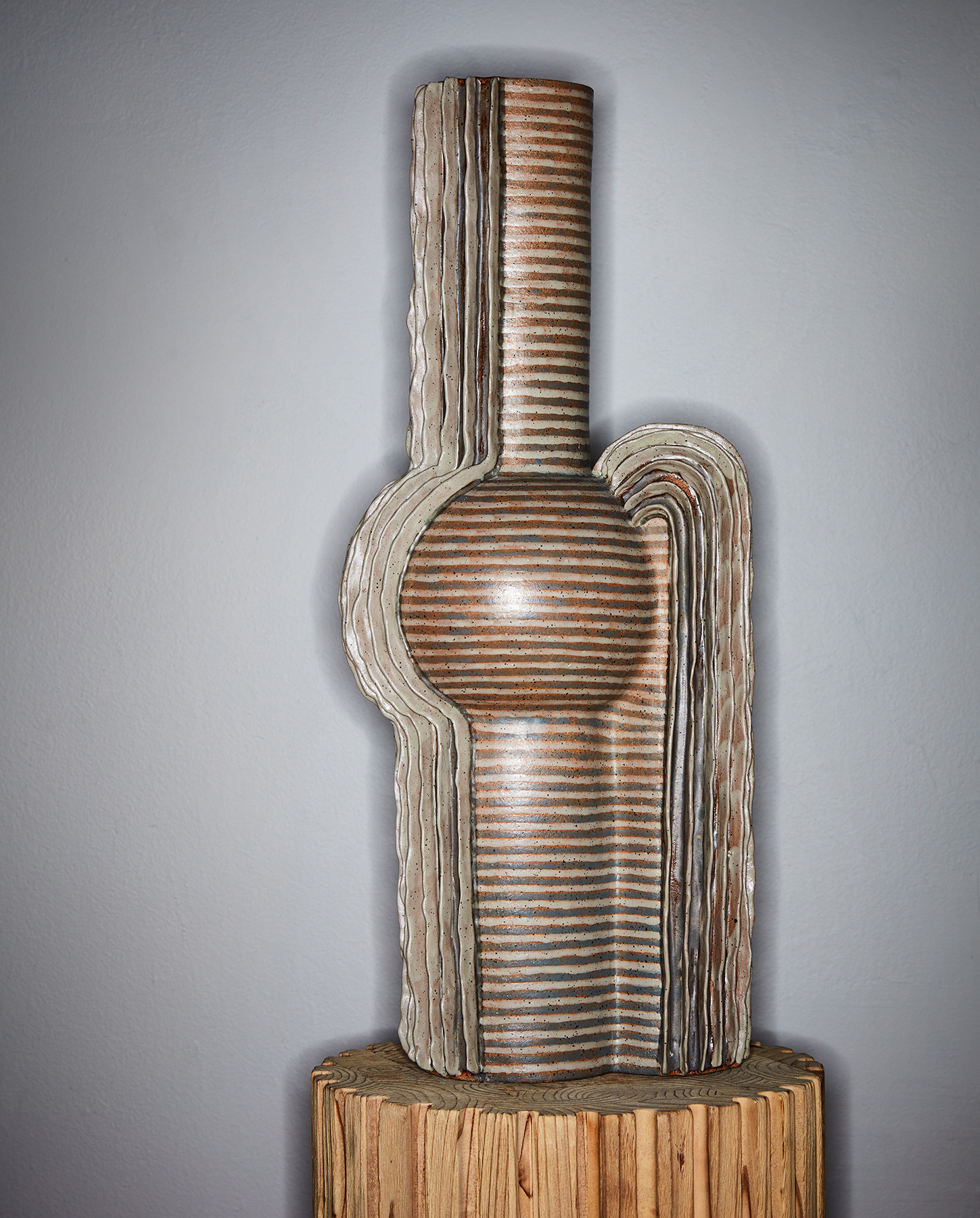
Vessel 06, made of stoneware with grey and stone hand-painted stripes and fins, glaze
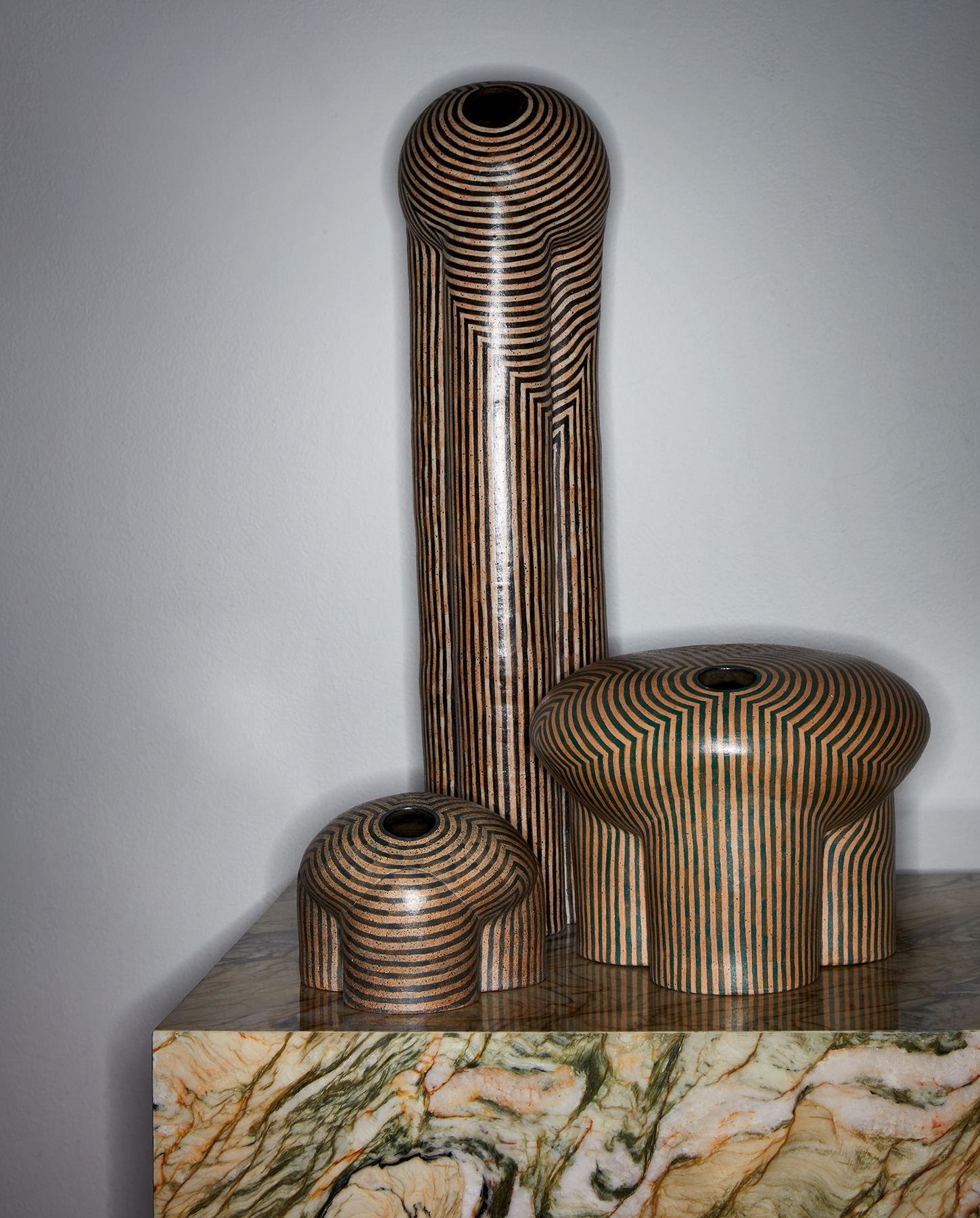
A trio of stoneware Piccolos with hand-painted stripes
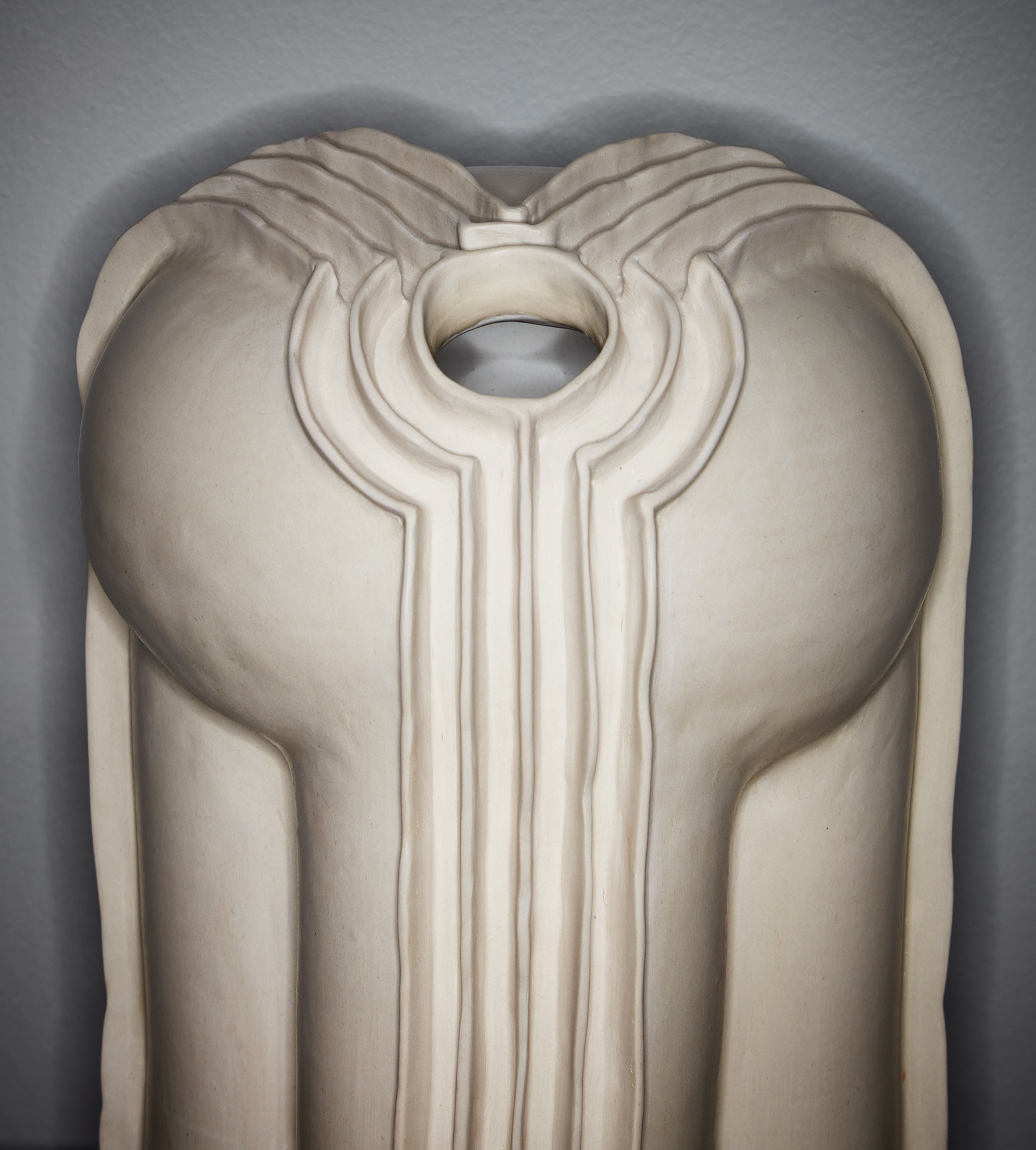
Piccolo 34, made of porcelain
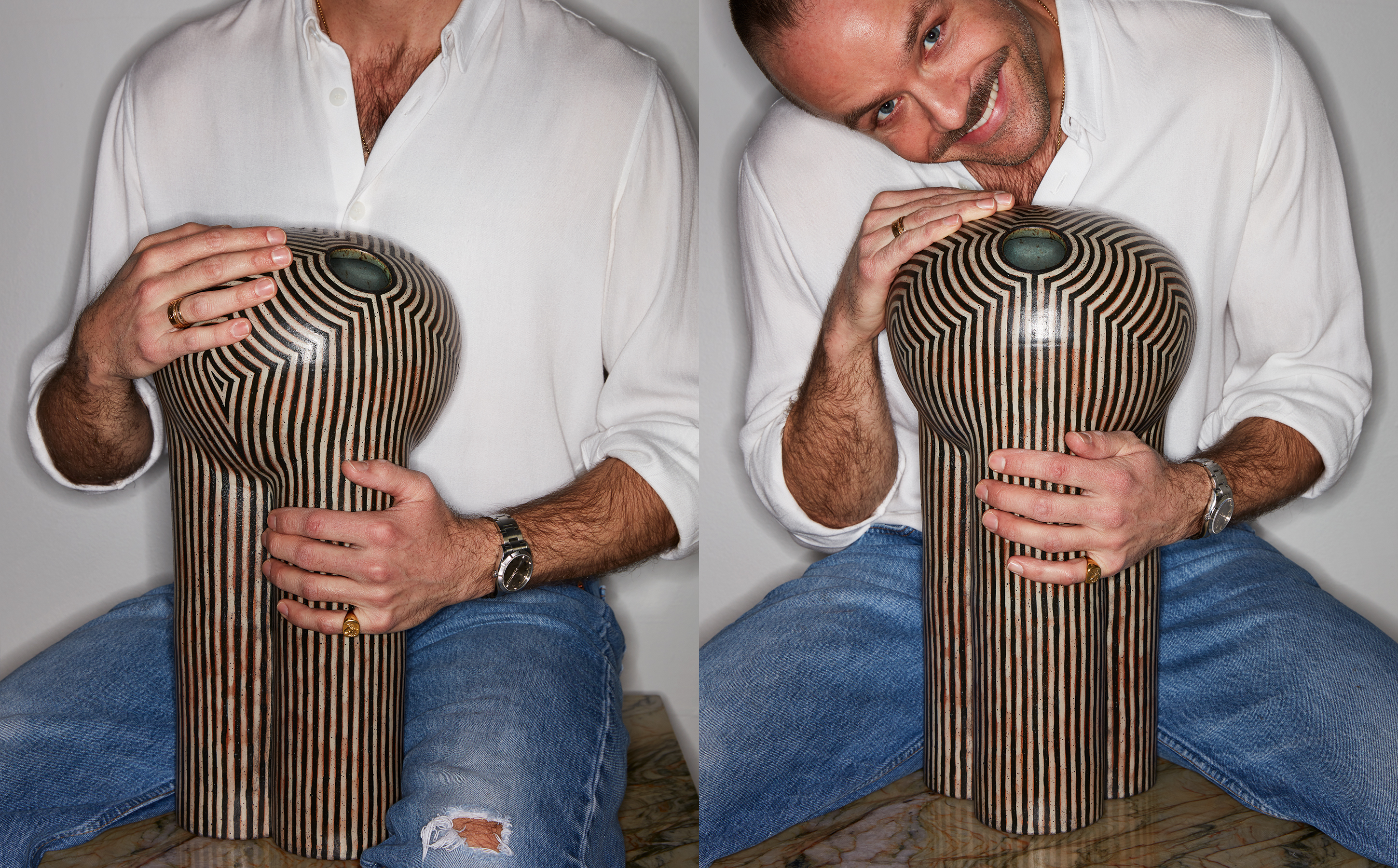
Jeremy Anderson with Piccolo 23, made of stoneware with black and stone hand-painted stripes
INFORMATION
‘The Piccolo Parade’ is on view 13 – 31 March at Apparatus
ADDRESS
124 West 30th Street
Floor 4, New York
NY 10001
Pei-Ru Keh is a former US Editor at Wallpaper*. Born and raised in Singapore, she has been a New Yorker since 2013. Pei-Ru held various titles at Wallpaper* between 2007 and 2023. She reports on design, tech, art, architecture, fashion, beauty and lifestyle happenings in the United States, both in print and digitally. Pei-Ru took a key role in championing diversity and representation within Wallpaper's content pillars, actively seeking out stories that reflect a wide range of perspectives. She lives in Brooklyn with her husband and two children, and is currently learning how to drive.
-
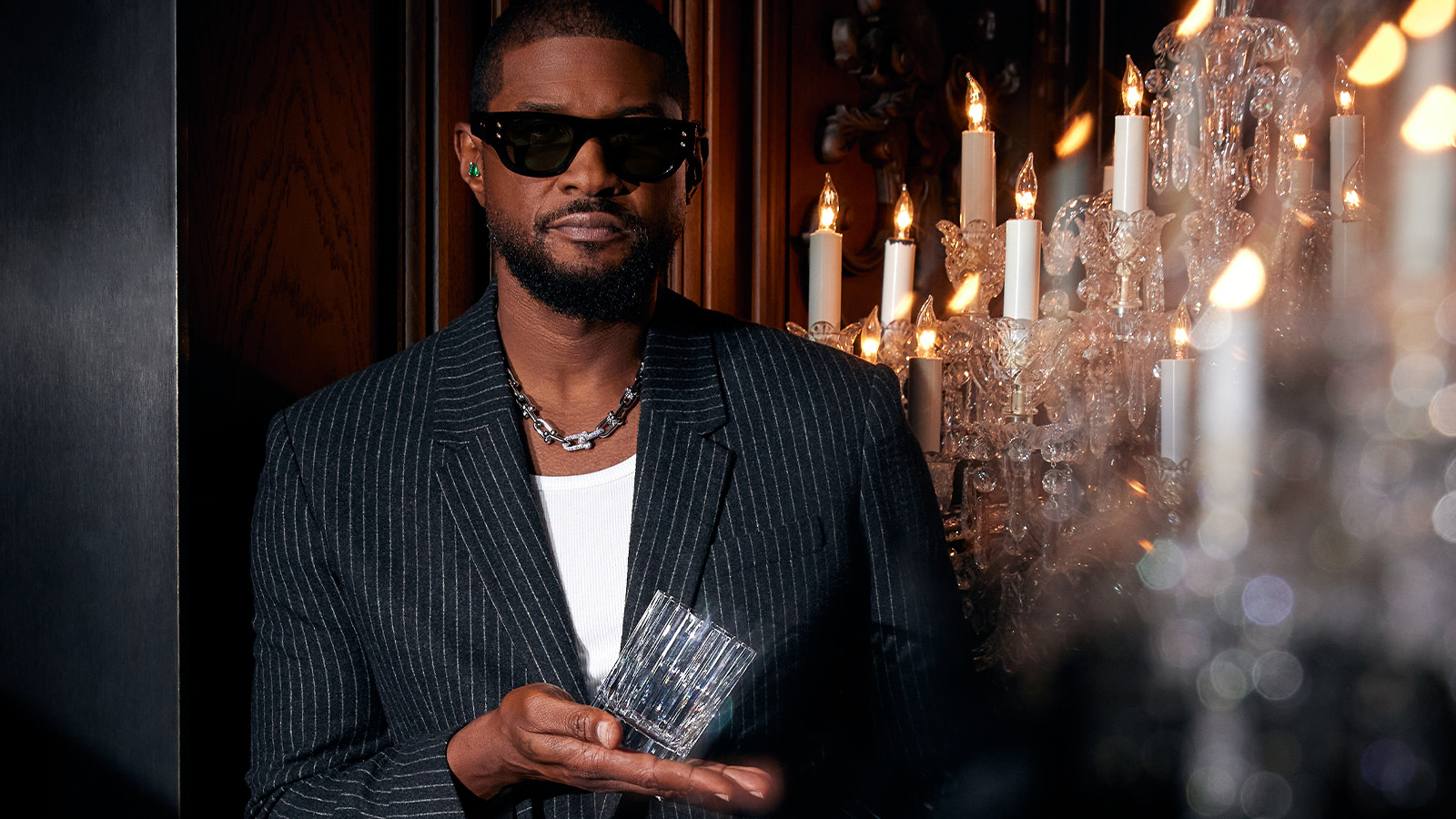 Usher opens up about breakfast playlists, banana pudding and why a glass tumbler is always on his rider
Usher opens up about breakfast playlists, banana pudding and why a glass tumbler is always on his riderOn the heels of a collaboration with Baccarat, the Grammy-winning singer-songwriter breaks down his entertaining tips. 'Hosting is an expression of how you feel about your guests and also who you are.'
-
 The beauty trends that will define 2026, from ultra-niche fragrances to anti-ageing dental care
The beauty trends that will define 2026, from ultra-niche fragrances to anti-ageing dental careAs we enter the new year, we speak to experts in fragrance, skincare, aesthetics, wellness and more about the trends that will be shaping the way we look
-
 The most stylish hotel debuts of 2025
The most stylish hotel debuts of 2025A Wallpaper* edit of this year’s defining hotel openings. Design-led stays to shape your next escape
-
 Ones to Watch: Plaster Paris Studio unites brutalism and bohemia
Ones to Watch: Plaster Paris Studio unites brutalism and bohemiaDesigners Tessa Rose Vardy and Olivia Engelhardt draw inspiration from the urban landscape of Paris and the laidback warmth of the Balearics
-
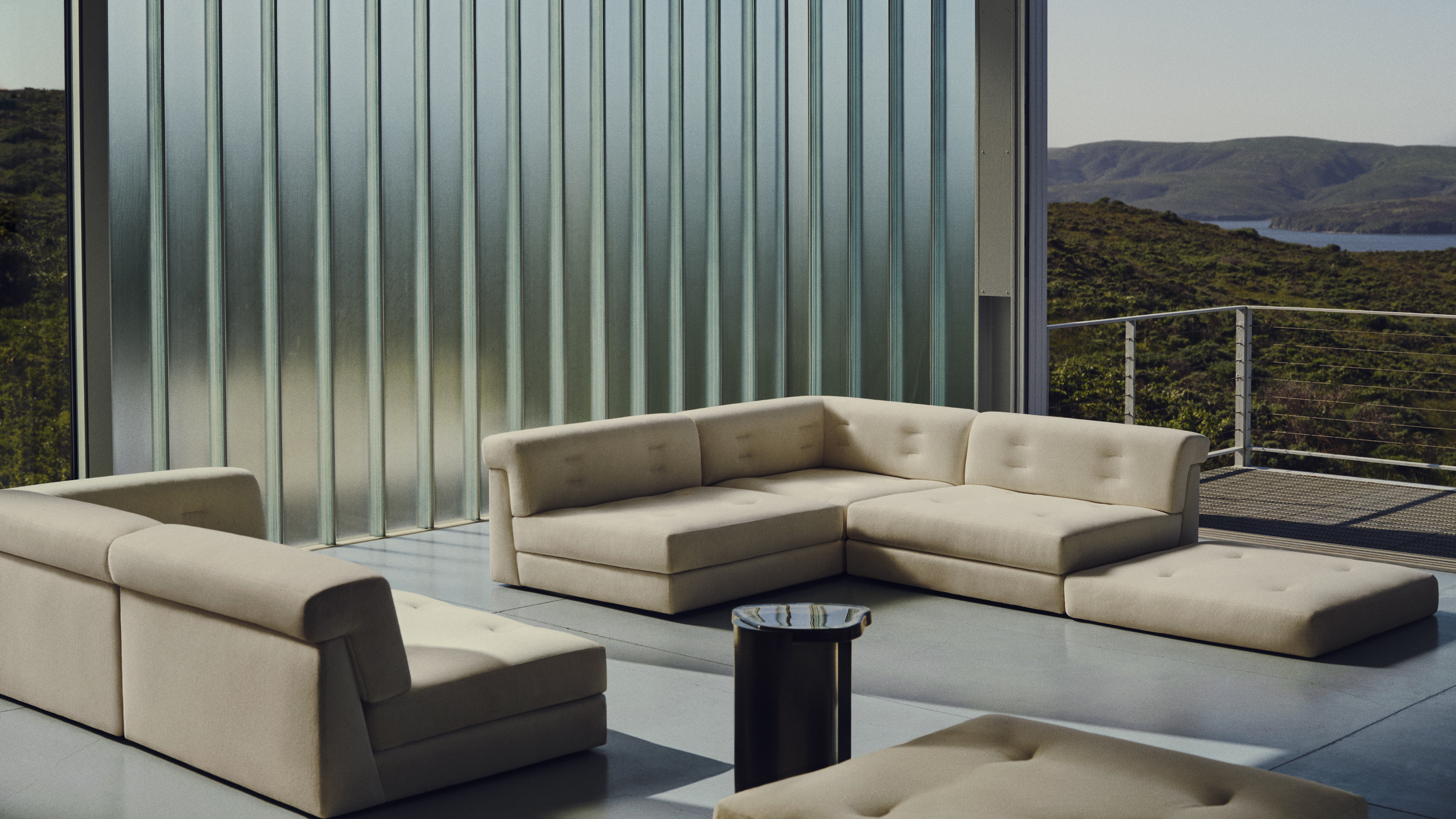 New furniture from Maiden Home elevates elemental materials through unique design
New furniture from Maiden Home elevates elemental materials through unique designFinely crafted and exquisitely formed, the New York furniture brand’s latest designs find their perfect showcase at a modernist Californian home
-
 Wallpaper* USA 400: The people shaping Creative America in 2025
Wallpaper* USA 400: The people shaping Creative America in 2025Our annual look at the talents defining the country’s creative landscape right now
-
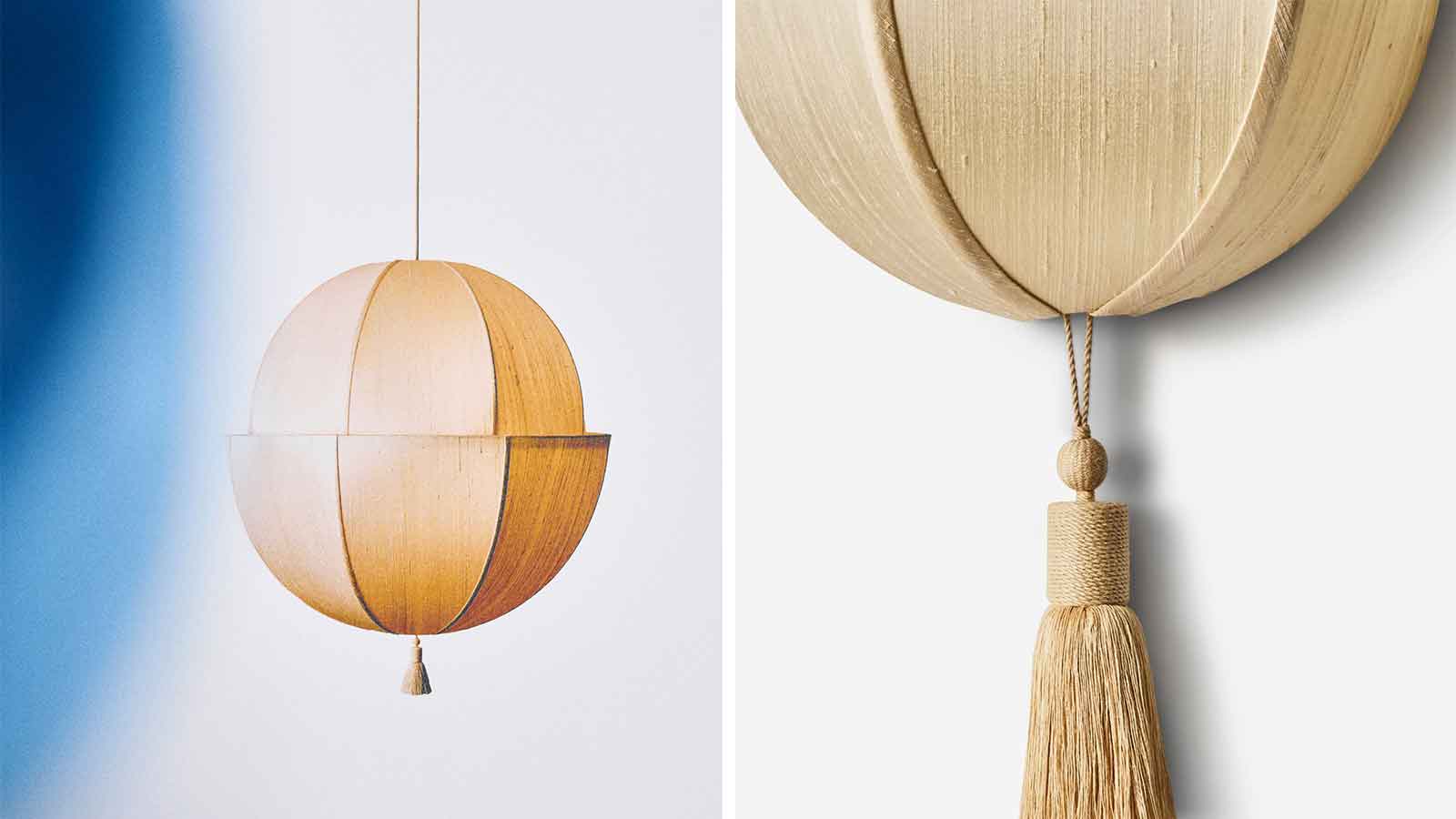 Workstead's lanterns combine the richness of silk with a warm glow
Workstead's lanterns combine the richness of silk with a warm glowAn otherworldly lamp collection, the Lantern series by Workstead features raw silk shades and nostalgic silhouettes in three designs
-
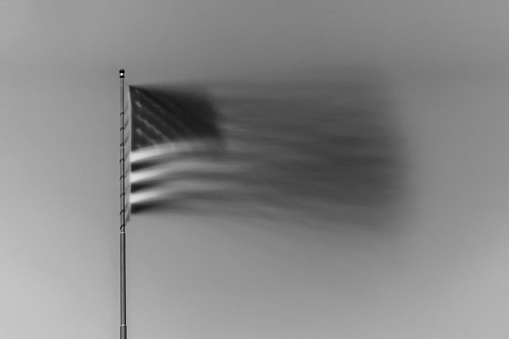 Can creativity survive in the United States?
Can creativity survive in the United States?We asked three design powerhouses to weigh in on this political moment
-
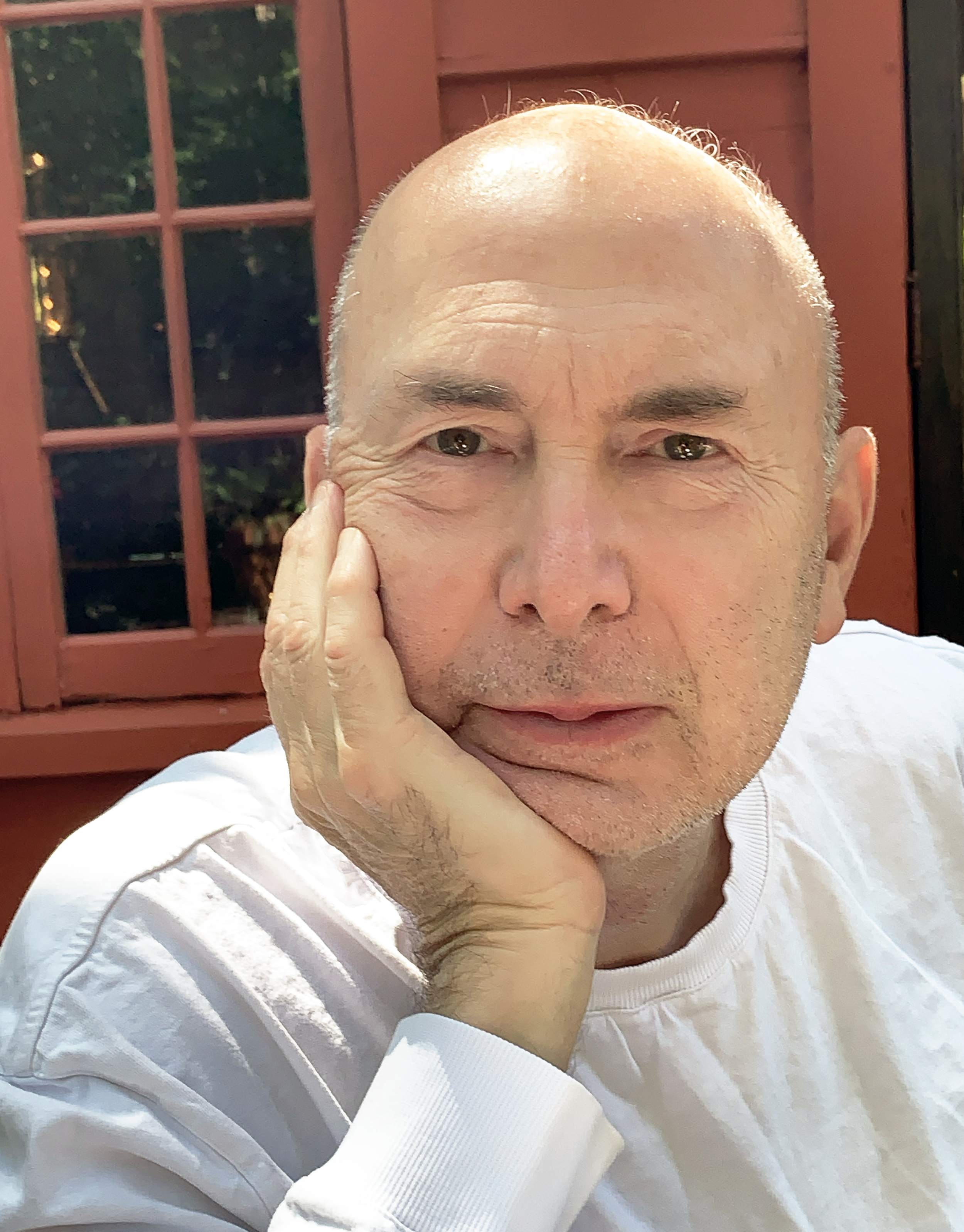 Murray Moss: 'We must stop the erosion of our 250-year-old American culture'
Murray Moss: 'We must stop the erosion of our 250-year-old American culture'Murray Moss, the founder of design gallery Moss and consultancy Moss Bureau, warns of cultural trauma in an authoritarian state
-
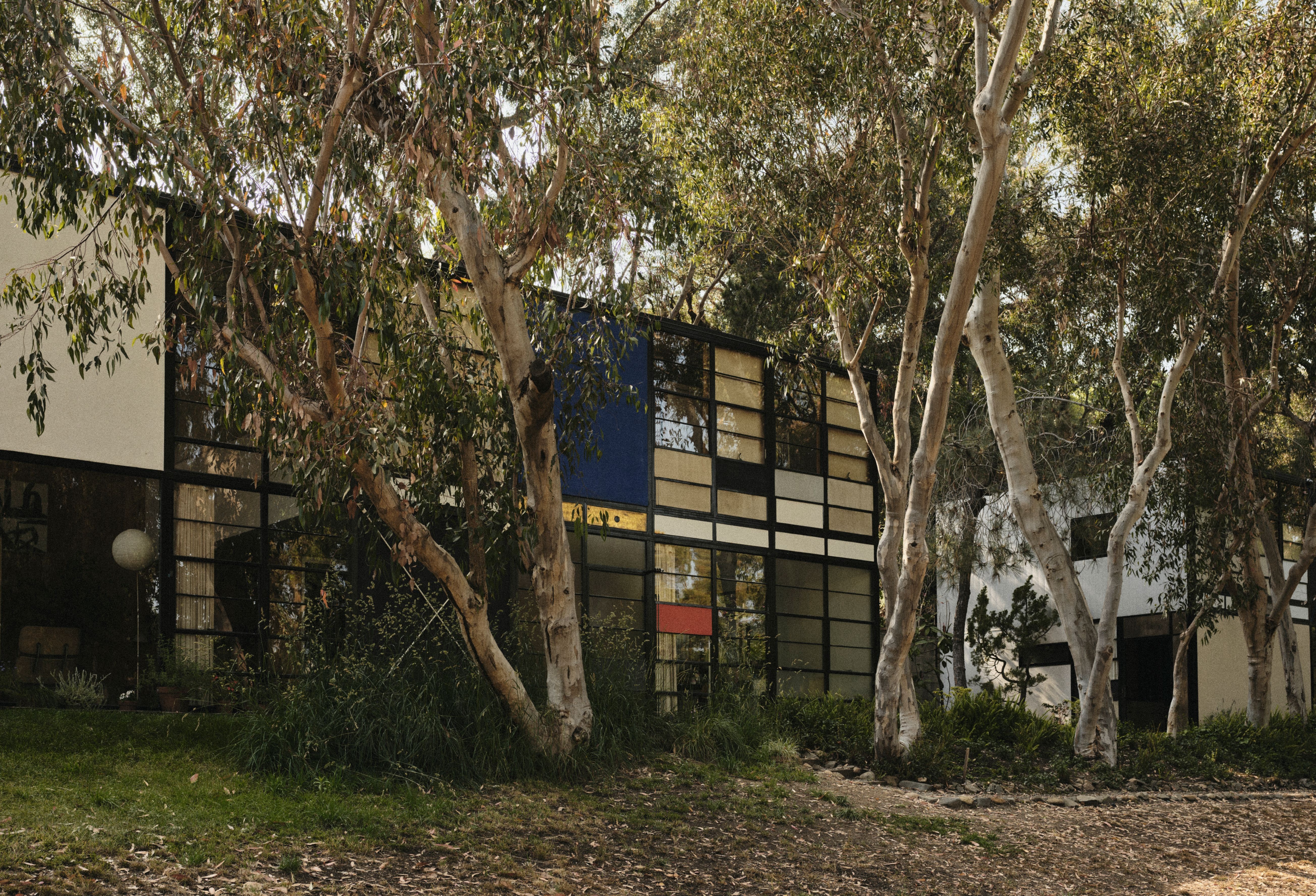 ‘You can feel their presence’: step inside the Eameses’ Pacific Palisades residence
‘You can feel their presence’: step inside the Eameses’ Pacific Palisades residenceCharles and Ray Eames’ descendants are exploring new ways to preserve the designers’ legacy, as the couple’s masterpiece Pacific Palisades residence reopens following the recent LA fires
-
 2025’s Wallpaper* US issue is on sale now, celebrating creative spirit in turbulent times
2025’s Wallpaper* US issue is on sale now, celebrating creative spirit in turbulent timesFrom a glitterball stilt suit to the Eames House, contemporary design to a century-old cocktail glass – the August 2025 US issue of Wallpaper* honours creativity that shines and endures. On newsstands now